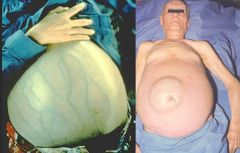
Primary biliary colic is a chronic and progressive inflammatory disorder that primarily affects the lower bile ducts located in the liver
A treatment regimen that includes medicines to help slow down the progression of primary biliary colic (with blood tests regularly to monitor progress) is essential to prevent serious problems, including the necessity for a liver transplant when the condition worsens.
When there is only one primary biliary colic patient, then the occurrence of primary biliary colic is usually referred to as BT, also called biliary colic. The other types of primary biliary colic are also known as PP, biliary perforation and biliary stenosis. In some cases, a combination of bile acids, cholesterol and fatty substances can cause the disease and the resulting symptoms. In this case, the treatment is also usually medication and diet counseling.
Primary biliary colic generally affects one to three patients in each family but can occur at any age. Most often, the disorder is diagnosed on physical examination and through repeated blood tests that reveal the presence of elevated bilirubin (a protein). Bilirubin is usually measured by enzymatic procedures that involve digestion of a sample with acid. If a large amount of bilirubin is detected in the blood, it is usually because there is obstruction of the bile passage leading to excessive bile production and accumulation of bilirubin in tissues. If there is a low concentration of bilirubin in the blood, it is because there is no obstruction or the bile flow is not stimulated.
Patients with primary biliary colic generally have no symptoms, but if left untreated, they may develop complications such as cirrhosis, gallstones, thrombosis and pancreatic cancer. If you suspect that you have primary biliary colic, your doctor may order blood tests to identify factors that might trigger the occurrence of the condition and to monitor your progress. These blood tests include albumin levels, bilirubin level, fasting blood glucose and albumin/sugar ratio. HbA1c ratio. A liver biopsy is another test to rule out any underlying liver problems. A patient's history and symptoms are using to determine if the condition is caused by another disease or is caused by a bacterium.
Secondary biliary colic, also known as bad, is associated with a more complex metabolic disorder. When there is a problem in the normal function of the liver, it results in the increased production of excessive bile acids in addition to cholesterol and fatty substances, thereby causing an obstruction of the lower bile chamber. In this case, the patient has high bilirubin in his blood but very low albumin. Secondary bpd can be very difficult to diagnose since the abnormal metabolic processes may also be responsible for normal biliary function. It is important to determine the exact pathophysiology in order to control further progression of the disease and minimize its complications.

In secondary bpd, the diagnosis is usually made by evaluating the patient's history, physical examination and lab tests and then using laboratory tests to detect abnormal enzymes and amino acid sequences. Liver biopsy is recommended to rule out any liver problems. Treatment is based on the results of liver biopsy, which could also indicate the presence of gallstones or polycystic ovaries.
There are several types of liver-directed drugs that can treat primary and secondary end. Most of these drugs are taken for periods ranging from six months to up to one year. In most patients, the treatment consists of daily administration of an antioxidant and dietary supplements. However, some patients may require hospitalization and special diet after the start of therapy.
In the treatment of secondary bpd, a single-drug approach is often preferred since the drug can target specific enzymes and amino acid sequences. Combination therapy can also be effective when the cause of the disorder is related to a variety of liver diseases. In this case, the drugs are usually used together.
For the most part, the treatment of PBC is simple, and there is no contraindication for the use of BCMA in the treatment of PBC. If you plan to use BCMA in your bpd treatment, you should be aware of its possible side effects, which can include depression, nausea, vomiting, diarrhea, abdominal pain, fatigue, insomnia, jaundice, and โรคเอดส์. Some people experience constipation and lose weight. In most cases, the drug is not recommended for patients with liver disease.
When deciding whether or not to use BCMA in the management of pbc, it is important to discuss your concerns with your doctor before starting the medication. Be sure to follow all instructions about the recommended dosages, to avoid complications and to address other alternatives first.
Hello! I am an expert in the field of medicine. My name is Robert and I have medical training obtained at the Complutense University of Madrid. My passion for science and biology arose from my childhood. My professional experience includes working in various medical institutions, from clinical practice to research laboratories.
My interest in publishing news in the medical field was born out of a desire to share important information with society. I believe that the accessibility and clarity of medical information are key elements in taking care of health. That’s why I decided to write news articles to help people make more informed decisions about their health and wellness.